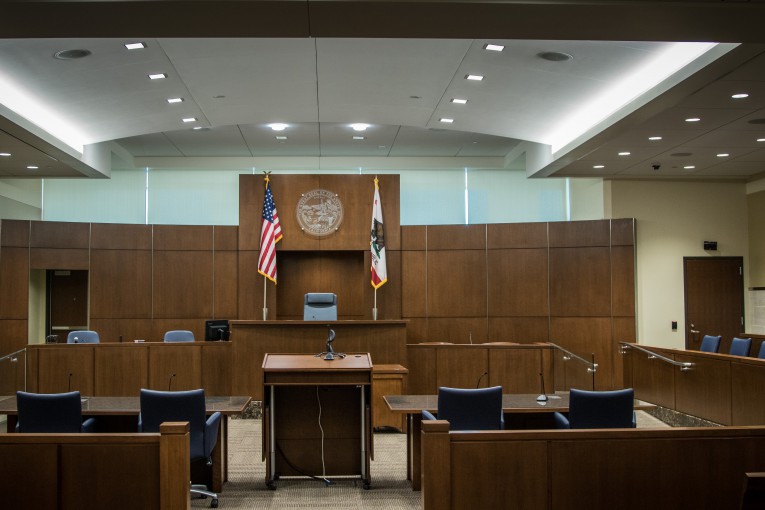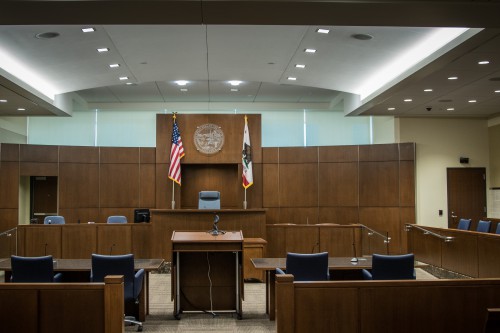
 Motion to Suppress Evidence of Controlled Substance and Paraphernalia Confiscated During Unwarranted Stop
Motion to Suppress Evidence of Controlled Substance and Paraphernalia Confiscated During Unwarranted Stop
By Mariel Barbadillo
On July 5, 2016, Defense Attorney J. Robert Spangler, on behalf of his client David Ramirez, filed a motion to suppress evidence pursuant to Penal Code section 1538.5. Mr. Ramirez is charged with possessing a controlled substance and drug paraphernalia, both of which were allegedly found during an unwarranted search and detention.
The incident occurred in Knights Landing on the night of January 1, 2016. Yolo County Sheriff’s Deputies Alex Ingman and Jack Schubert stopped a motor vehicle that allegedly had a cracked rear taillight. There was one person in the driver’s seat, one person in the front passenger seat, and another person in the rear passenger seat. The person in the rear passenger seat was later identified as the defendant, Mr. Ramirez.
Once in contact with the driver and passengers, Deputy Ingman allegedly told them the reason for the stop and proceeded to question whether any of them had been in any legal trouble before. They all answered that they had not.
The deputies then conducted a record check on the occupants of the car and found that they had, in fact, been in legal trouble in the past. Acting on this information, the deputies continued their detention of everyone in the car.
The occupants of the car allegedly “looked nervous” and were ordered out of the car. The driver gave the officers consent to search the car.
The deputies proceeded to ask each detained person for consent before conducting a pat down search. The driver and front seat passenger consented and were searched. Nothing was found.
Mr. Ramirez, however, did not consent to the search.
The deputy told Mr. Ramirez that he would only search for weapons. He then allegedly consented to such a search.
During the search, the deputy felt a lump on the defendant’s person, which was immediately identified as a methamphetamine pipe. Mr. Ramirez was summarily arrested.
The defense argued that this search and seizure was unlawful. They are asking the court to suppress all observations made by the arresting officers, any statements by Mr. Ramirez, and the meth pipe, as well as plastic baggies allegedly containing methamphetamine, that were seized from the defendant.
As ruled in United States v. Salvucci (1980), an illegal search and seizure violates the federal constitutional rights of those with a legitimate expectation of privacy in the invaded place or seized thing. The defendant bears the burden of showing a legitimate expectation of privacy, as well as legitimate standing, in order to bring forth a Fourth Amendment challenge, according to Rawlings v. Kentucky (1980).
The defense stated simply that both the vehicle in which Mr. Ramirez was a passenger as well as his own person were private, and were searched and seized. Thus, the defendant has standing to object to the search and seizure.
A search without a warrant is presumptively illegal and, according to Welsh v. Wisconsin (1984), the prosecution has the burden of justifying the search under a recognized exception to the warrant requirement articulated in the United States Constitution.
The prosecution also has to prove that “the consent was, in fact, freely and voluntarily given,” as well as that the warrantless search was justified as incident to a valid arrest, as stated in Chimel v. California (1969).
The detention of Mr. Ramirez was unwarranted and the alleged consent given by the defendant was, according to the defense, “so limited as to preclude the inquiry into other items detected during the search.”
Furthermore, the defense argued that the detention was unlawful due to a lack of reasonable suspicion. Reasonable suspicion consists of specific and objective facts that would cause an officer to reasonably suspect that there is criminal activity taking place or about to take place and that the person the officer intends to detain is involved in the activity.
On the other hand, “a mere curiosity, rumor, or hunch” is not enough for an officer to stop or detain someone.
In the instant case, the defense argued, Deputies Schubert and Ingman did not have reasonable suspicion that criminal activity was taking place or that Mr. Ramirez was involved in such criminal activity. Therefore, the defense argued that the deputies’ detention of Mr. Ramirez was unlawful.
Lastly, the defense argued that evidence resulting from an illegal search or seizure must be suppressed under the “fruit of the poisonous tree” doctrine, as detailed in People v. Williams (1988).
According to the exclusionary rule, if law enforcement officers conduct a search that violates a person’s Fourth Amendment rights, all primary and secondary evidence must be suppressed. Primary evidence refers to physical evidence seized during the unlawful search, while secondary, or derivative, evidence is obtained after-the-fact through information officers learn during the unlawful search.
The defense thus argued that the court should exclude the “fruit of the poisonous tree,” referring to the derivative evidence, as well as “the tree itself,” referencing the primary evidence.
Preliminary Hearing on Assault with Deadly Weapon
By Raya Zahdeh
The preliminary hearing for the People v. Bucio occurred on the afternoon of August 10, 2016, with Judge Samuel McAdam in Department 7. The attorney present for the prosecution was Deputy DA Davitt, with Deputy Public Defender Dan Hutchinson representing the defense.
The hearing involved witness testimonies regarding an incident that occurred in West Sacramento around 4 PM on June 9, 2016.
The first witness to take the stand was Officer Tyler Rainey of the West Sacramento Police Department. On the afternoon of June 9, Officer Rainey was dispatched to a preschool in West Sacramento where there had been a call received regarding an assault with a deadly weapon.
Officer Rainey spoke to the alleged victim, who happened to be the director of the preschool. She explained to Rainey that, while she was working inside the preschool, she heard an alarming noise coming from outside, near the front area of the building.
She noticed the noise coming from a male that she recognized as Oscar Bucio, the defendant in this case. She had previously encountered Bucio, as he was frequently present in an alleyway near the preschool before this incident occurred. During previous encounters, Bucio had yelled at her and vandalized the fence bordering the preschool.
On the afternoon of June 9, the preschool director had walked outside and spoken to Bucio when she realized the noise was due to his removal of one of the wooden boards of the fence at the preschool. He responded by telling her he would burn the school down and by threatening to kill her.
When she approached and was located between the two vehicles parked in the driveway of the preschool, the defendant held the four-foot wooden board as if it were a baseball bat and swung it at her. The preschool director moved out of the way fast enough, and the board missed her by a couple of inches and instead struck the back portion of her van, parked in the driveway.
The director then made her way back to the door of the preschool, while Bucio picked up three rocks and threw them toward the entrance of the school. By this time, many people had come outside and were observing what was going on. At the same time, Bucio started to walk away from the preschool.
During this encounter, the preschool director attempted to call the police. Meanwhile, Bucio continued to threaten her and yell inappropriate comments about her. The director told Officer Rainey that she was afraid for her life, and felt very vulnerable during his interview with her. Officer Rainey conducted a field show-up afterward, with only the suspect being shown to her, during which she was able to positively identify Bucio. The officer recognized Bucio during the show-up, and stated that he also had had prior encounters with the defendant.
Next to give his witness testimony was Officer Scott Farnsworth, also of the West Sacramento Police Department. Officer Farnsworth stated that he had been dispatched to the same preschool on the afternoon of June 9, 2016.
He spoke to a witness at the scene who was working with the preschool director at the preschool that day. The witness told Officer Farnsworth that she was speaking with the director before they both heard the noise, at which point the director left to go outside and figure out what caused the noise. The witness overheard the argument between the director and the defendant, and she recognized Bucio from previous encounters as well.
She specifically overheard the preschool director telling Bucio that he had to leave the property, and that she was going to call the police. The defendant proceeded to swing the wooden board at the director. The witness stated that she saw Bucio pick up the wooden board, hold it above his head, and throw it at the director a second and third time. She also said she believed that the board missed the director after each of the three attempts, and that she heard Bucio threatening to kill the director.
After speaking to the witness, Officer Farnsworth conducted a field show-up with her. She was immediately able to recognize and identify Bucio as the male from the incident that occurred outside the preschool building.
After the witness testimonies were completed and the evidence was presented before the court, Judge McAdam stated that the defendant would be held to answer on counts of assault with a deadly weapon, vandalism, and criminal threats. Furthermore, an arraignment on the information is scheduled to take place on August 25, 2016, at 9 AM in Department 7 of Yolo County Superior Court .
“question whether any of them had been in any legal trouble before.” if “I can’t recall” is good enough for a president it should be good enough for a bunch of tweakers.